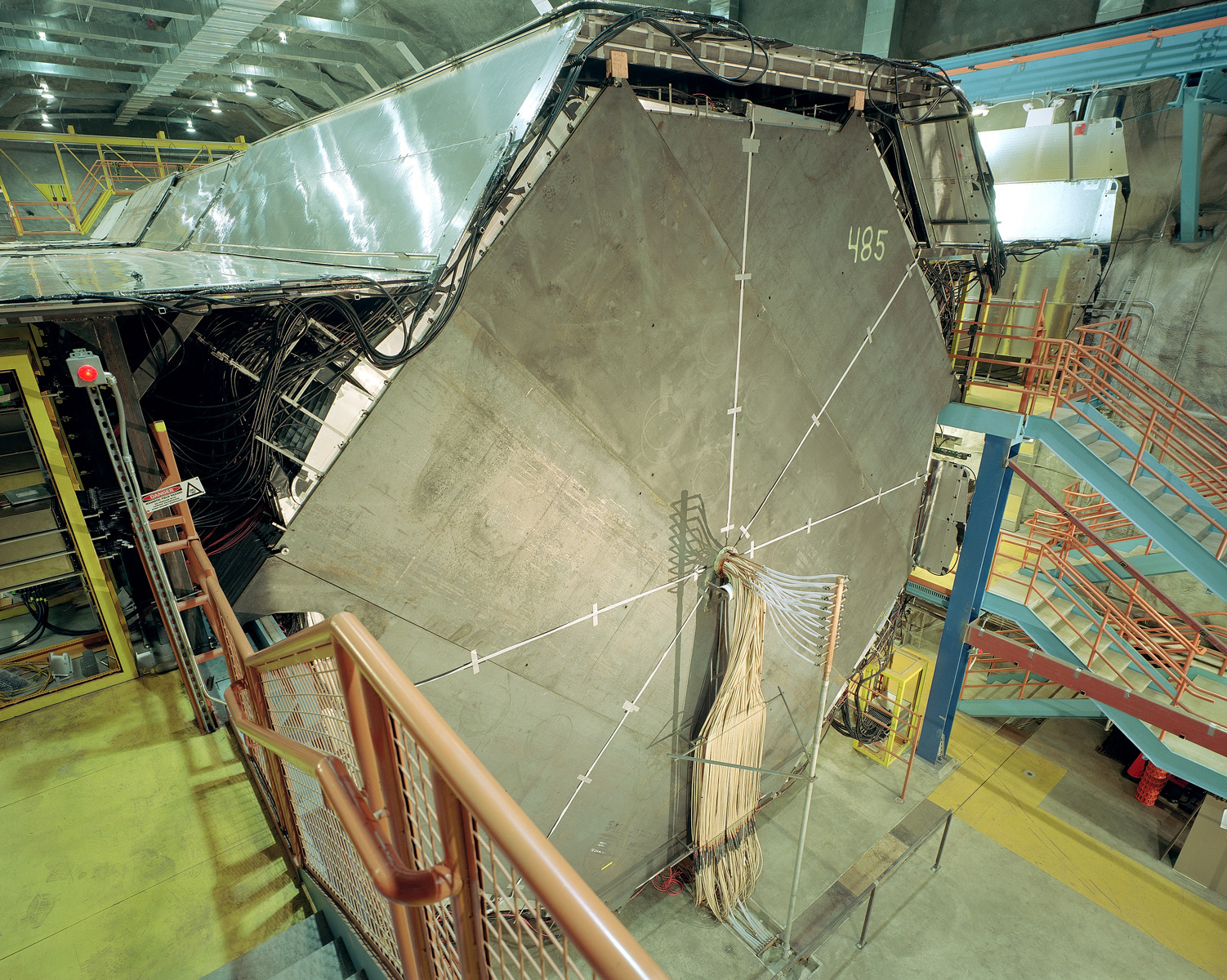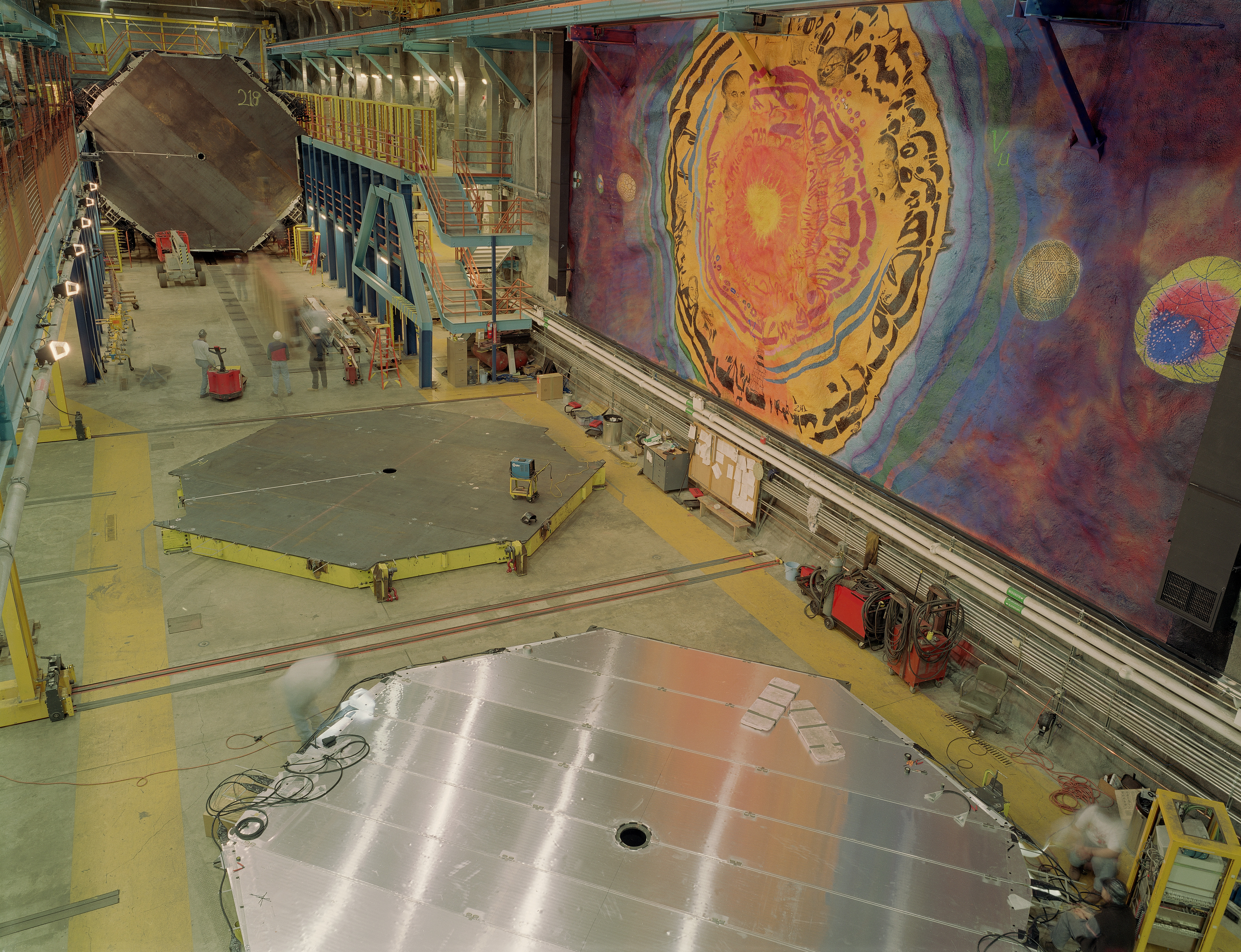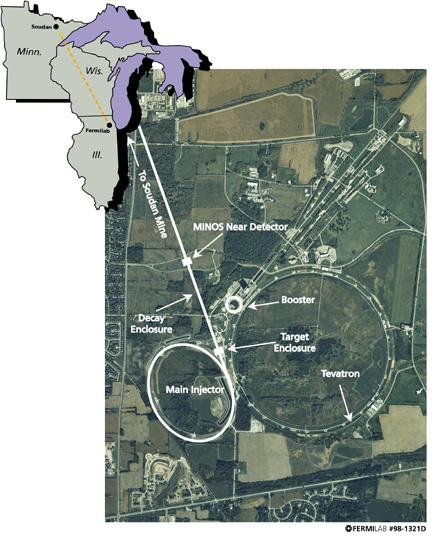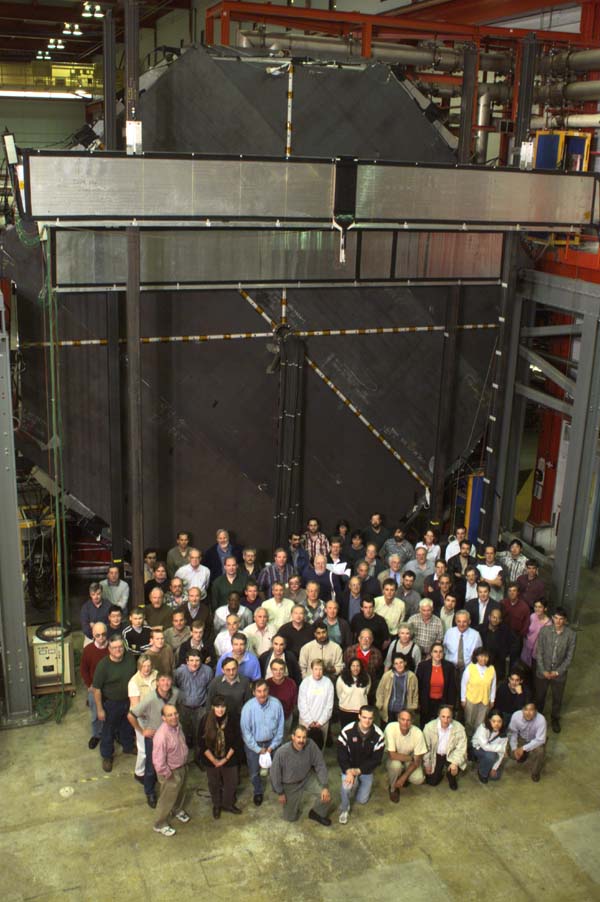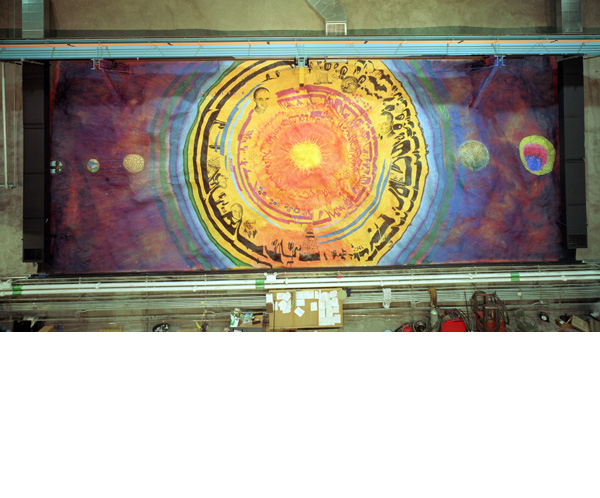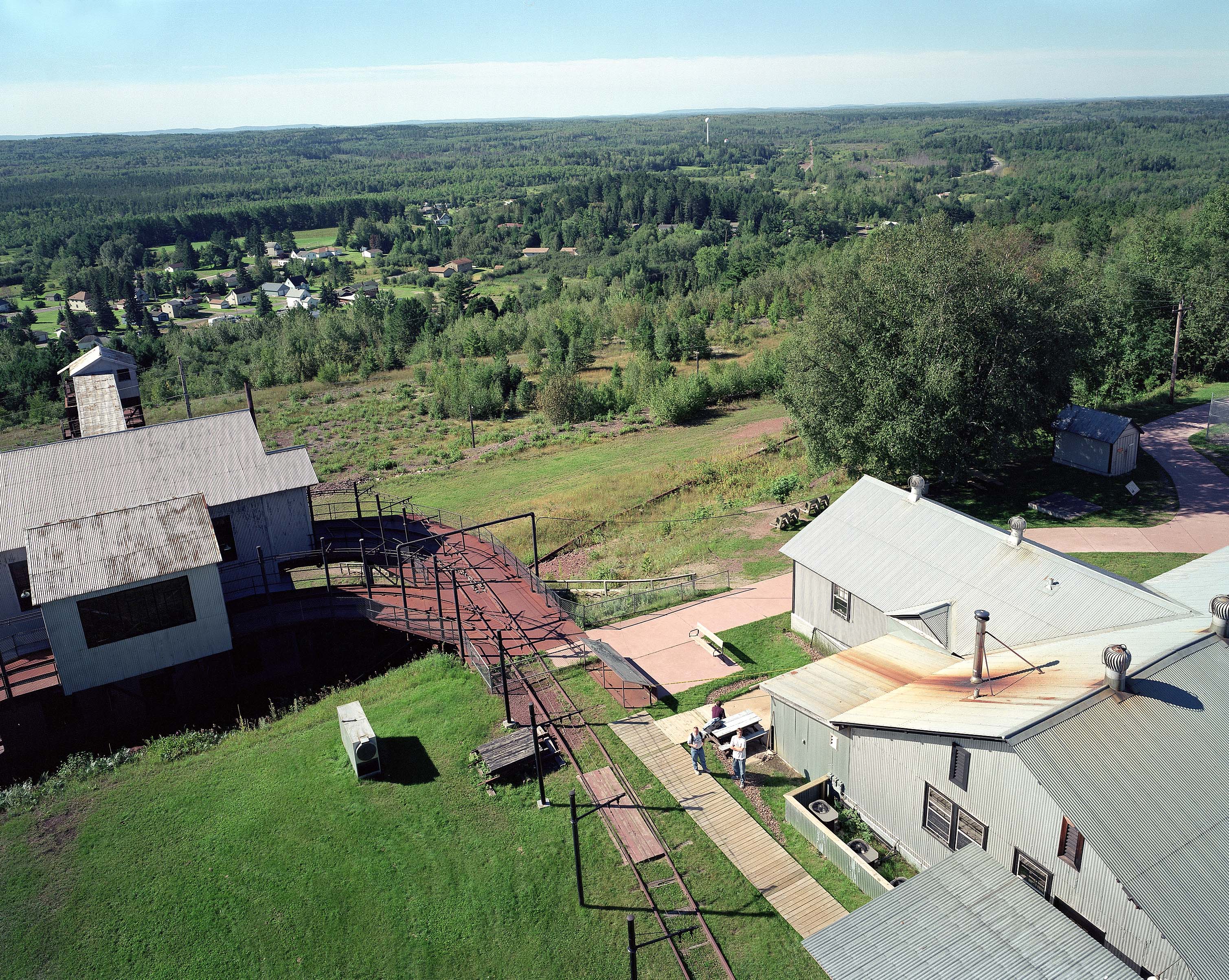Data-Taking Begins at MINOS Neutrino Detector, Half a Mile Underground
Batavia, Ill. -- Scientists of the MINOS collaboration at the Department of Energy’s Fermi National Accelerator Laboratory today (August 14) announced the official start of data-taking with the 6,000-ton detector for the Main Injector Neutrino Oscillation Search. Physicists will use the MINOS detector, located deep in an historic iron mine in northern Minnesota, to explore the phenomenon of neutrino mass.
In July, after four years of mining and construction, workers finished building the first of two detectors of the ambitious MINOS particle physics experiment. Today, after completing the hardware and testing the detector’s systems, scientists announced the official startup of data-taking with the MINOS “far” detector, ahead of the scheduled completion in April 2004. Technicians will complete the assembly of a “near” detector, smaller in size than the far detector, at Fermilab in August 2004.
“This is an important milestone in the worldwide quest to develop neutrino science,” said Dr. Raymond L. Orbach, director of DOE’s Office of Science. “The MINOS detector in Soudan, Minnesota, together with the new Fermilab neutrino beam line, will provide a detailed look at the secrets behind neutrino oscillations. It will complement the large-scale neutrino projects in Japan, Canada and Europe. Significantly, the completion of the detector comes nine months ahead of schedule.”
The looming 100-foot-long detector consists of 486 massive octagonal planes, lined up like the slices of a loaf of bread. Each plane consists of a sheet of steel about 25 feet high and one inch thick, covered on one side with a layer of scintillating plastic. To construct the detector, technicians had to transport all detector components in small sections via a narrow mine shaft in a tiny historic elevator cage that once transported miners underground.
“It was like building a ship in a bottle,” said MINOS spokesperson Stanley Wojcicki, physics professor at Stanford University. “We needed to bring all the material underground and assemble it right there. The last step was to install a magnetic coil and energize it. MINOS is the only large-scale neutrino experiment underground that can separate neutrino and antineutrino interactions, allowing us to look for differences in their behavior.”
At present, the new detector is recording cosmic ray showers penetrating the earth. The data will provide first tests of matter-antimatter symmetry in neutrino processes. In early 2005, when the construction of a neutrino beamline at Fermilab is complete, the experiment will enter its next phase. Scientists will use the far detector to “catch” neutrinos created at Fermilab’s Main Injector accelerator in Batavia, Illinois. The neutrinos will travel 450 miles straight through the earth from Fermilab to Soudan – no tunnel needed. The detector will allow scientists to directly study the oscillation of muon neutrinos into electron neutrinos or tau neutrinos under laboratory conditions. More than a trillion man-made neutrinos per year will pass through the MINOS detector in Soudan. Because neutrinos rarely interact with their surroundings, only about 1,500 of them will make a collision with an atomic nucleus inside the detector. The rest will traverse the detector without leaving a track.
Scientists have discovered three different types of neutrinos: electron neutrinos, muon neutrinos, and tau neutrinos. The particles play an important role in stellar processes like the creation of energy in stars as well as supernova explosions. Experimental results obtained over the last five years have confirmed that the evasive particles have mass and switch back and forth among their three different identities while traveling through space and matter. Scientists expect the MINOS experiment to provide the best measurement of neutrino properties associated with the so-called “atmospheric” oscillations.
Funding for the MINOS experiment has come from the Office of Science of the U.S. Department of Energy, the British Particle Physics and Astronomy Research Council, the U.S. National Science Foundation, the State of Minnesota and the University of Minnesota. More than 200 scientists from Brazil, France, Greece, Russia, United Kingdom and the United States are involved in the project.
List of institutions collaborating on MINOS:
Brazil:
University of Campinas
University of Sao Paulo
France:
College de France
Greece:
University of Athens
Russia:
ITEP-Moscow
Lebedev Physical Institute
IHEP-Protvino
United Kingdom:
University of Cambridge
University College London, London
University of Oxford
Rutherford Appleton Laboratory
University of Sussex
United States:
Argonne National Laboratory
Brookhaven National Laboratory
California Institute of Technology
Fermi National Accelerator Laboratory
Harvard University
Illinois Institute of Technology
Indiana University
Livermore National Laboratory
Macalester College, Minnesota
University of Minnesota, Minneapolis
University of Minnesota, Duluth
University of Pittsburgh
Soudan Underground Laboratory
University of South Carolina
Stanford University
Texas A&M University
University of Texas at Austin
Tufts University
Western Washington University
University of Wisconsin-Madison
